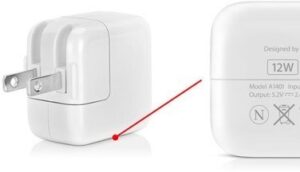Curious about how a battery charger actually works? Look no further! In this article, we’re going to delve into the inner workings of battery chargers and demystify this essential device. Whether you’re a tech enthusiast or simply looking to understand the mechanics behind charging your devices, you’ve come to the right place. So, how does a battery charger work, you ask? Well, let’s dive right in and uncover the fascinating process that powers up your batteries.
How Does a Battery Charger Work?
Introduction
A battery charger is an essential device that allows us to recharge our batteries and keep our devices powered up and ready to use. Whether it’s a smartphone, laptop, or even a car battery, a battery charger plays a vital role in keeping our devices functional. But have you ever wondered how a battery charger actually works? In this article, we will delve into the inner workings of a battery charger and explore the science behind its functionality.
Understanding the Basics of Batteries
Before we dive into how a battery charger functions, it’s important to have a basic understanding of how batteries themselves work. Batteries store electric energy in a chemical form and convert it into electrical energy when needed. They consist of one or more cells, each containing a positive electrode (cathode) and a negative electrode (anode) separated by an electrolyte solution.
When a battery discharges, a chemical reaction occurs within the cell, producing an electrical current that flows from the negative electrode to the positive electrode. This flow of electrons powers our devices. A battery charger reverses this process, allowing us to recharge the battery by pushing the electrons back from the positive electrode to the negative electrode.
Components of a Battery Charger
A battery charger typically consists of several key components that work together to efficiently charge a battery. Let’s explore each of these components in detail:
1. Transformer
The transformer is a vital component of a battery charger that helps regulate the voltage supplied to the battery. It consists of two coils of wire, the primary and secondary coils, which are wound around a magnetic core. The primary coil is connected to the power source, while the secondary coil connects to the battery.
The transformer works on the principle of electromagnetic induction. When an alternating current (AC) passes through the primary coil, it induces a changing magnetic field in the core. This changing magnetic field, in turn, induces a voltage in the secondary coil, which is then supplied to the battery.
2. Rectifier
The rectifier is responsible for converting the alternating current (AC) from the power source into direct current (DC) that can be used to charge the battery. It is essential because batteries require a constant, steady flow of DC voltage for charging.
There are two main types of rectifiers used in battery chargers: half-wave rectifiers and full-wave rectifiers. Half-wave rectifiers allow only half of the AC waveform to pass through, resulting in a pulsating DC output. Full-wave rectifiers, on the other hand, rectify both halves of the AC waveform, producing a smoother DC output.
3. Voltage Regulator
The voltage regulator ensures that the battery charger provides a stable and controlled voltage to the battery during the charging process. It regulates the voltage output from the rectifier and prevents it from exceeding the recommended charging voltage for the specific battery type.
Overcharging a battery can lead to damage or even cause it to explode. The voltage regulator helps protect the battery by monitoring the charging voltage and adjusting it as needed to maintain a safe and optimal charging level.
4. Control Circuitry
Modern battery chargers often incorporate intelligent control circuitry that enhances their performance and safety. These control circuits monitor various parameters, such as the battery’s voltage, temperature, and charging status, to determine the optimal charging strategy.
The control circuitry also ensures that the charging process follows a specific charging algorithm, which may vary depending on the battery chemistry. This algorithm includes stages like bulk charging, absorption charging, and float charging, all designed to maximize the battery’s charging efficiency and lifespan.
The Charging Process
Now that we understand the components of a battery charger, let’s explore the actual charging process in more detail. The charging process typically consists of several stages, each designed to optimize the charging efficiency and battery health. These stages vary depending on the type of battery being charged.
1. Bulk Charging
During the bulk charging stage, the charger supplies a constant current to the battery. This stage aims to quickly recharge the battery until it reaches a specific voltage threshold. The charger maintains a steady current output while the battery voltage gradually rises.
2. Absorption Charging
Once the battery voltage reaches the threshold during the bulk charging stage, the charger switches to the absorption charging stage. In this stage, the charger maintains a constant voltage while gradually decreasing the charging current. This stage allows the battery to absorb the remaining charge at a slower rate, ensuring it reaches its full capacity.
3. Float Charging
After the absorption charging stage, the charger enters the float charging stage. During this stage, the charger provides a lower voltage to the battery, which is just sufficient to compensate for the self-discharge rate of the battery. The float charging stage helps maintain the battery’s full charge without overcharging it, making it ready for immediate use whenever needed.
4. Trickle Charging (Optional)
Some battery chargers also offer a trickle charging mode designed to keep the battery at full charge for an extended period. Trickle charging supplies a very low current to the battery, compensating for any self-discharge and ensuring the battery remains fully charged.
Understanding how a battery charger works not only enhances our knowledge of these essential devices but also allows us to make informed decisions when selecting and using battery chargers. From the transformer and rectifier to the voltage regulator and control circuitry, each component plays a crucial role in ensuring efficient and safe charging. By following the recommended charging stages and utilizing the appropriate charging algorithms, a battery charger can effectively recharge batteries and keep our devices powered up for longer.
Remember, always refer to the manufacturer’s instructions and specifications to ensure you are using the correct charger for your specific battery type. With this knowledge, you can confidently choose and use battery chargers to keep all your devices up and running when you need them most.
How does a Battery Charger work? CCCV Battery Charging | CCCV regulator | Li-ion cell charger
Frequently Asked Questions
How does a battery charger work?
A battery charger is a device that replenishes the energy stored in rechargeable batteries. It works by converting electrical energy from a power source, such as an electrical outlet, into the appropriate voltage and current required to recharge the battery.
What are the main components of a battery charger?
The main components of a battery charger include:
- Transformer: Converts the incoming AC voltage to a lower or higher voltage.
- Rectifier: Converts the AC voltage into DC voltage.
- Control circuit: Regulates the charging process and protects the battery from overcharging.
- Output circuit: Controls the flow of current from the charger to the battery.
How does a battery charger determine the charging rate?
The charging rate of a battery charger is typically determined by the voltage and current settings selected by the user or automatically adjusted by the charger. The charger monitors the battery’s voltage and adjusts the charging current accordingly to prevent overcharging.
What is the difference between a trickle charger and a smart charger?
A trickle charger provides a low and constant charge to keep the battery topped up, while a smart charger employs advanced charging algorithms to adjust the charging rate based on the battery’s condition. Smart chargers are capable of detecting the battery’s chemistry and adjusting the charging parameters accordingly, resulting in faster and more efficient charging.
Can a battery charger be used for different types of batteries?
It depends on the charger. Some battery chargers are designed to be compatible with multiple battery chemistries, such as lead-acid, lithium-ion, or nickel-cadmium. However, it is crucial to consult the manufacturer’s instructions or specifications to ensure the charger is suitable for the specific type of battery you intend to charge.
Is it safe to leave a battery charging overnight?
In general, modern battery chargers have built-in safety features to prevent overcharging. However, it is recommended to follow the manufacturer’s instructions and avoid leaving a battery charging unattended for an extended period. It is advisable to disconnect the charger once the battery is fully charged to avoid any potential risks.
Final Thoughts
A battery charger is a device that replenishes the energy of a rechargeable battery. It works by converting electrical energy from an external power source into a form that can be stored in the battery. The charger regulates the voltage and current to ensure safe and efficient charging.
Modern battery chargers often utilize advanced technologies such as microprocessors and charging algorithms to optimize the charging process. These technologies monitor the battery’s state, adjust the charging parameters accordingly, and prevent overcharging or undercharging.
In conclusion, understanding how a battery charger works is crucial for efficiently and effectively recharging batteries. By converting electrical energy from an external source and regulating voltage and current, a battery charger ensures safe and optimal charging. So, the next time you need to charge your battery, you’ll have a better understanding of the process behind it.



